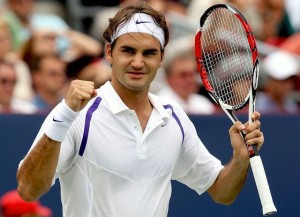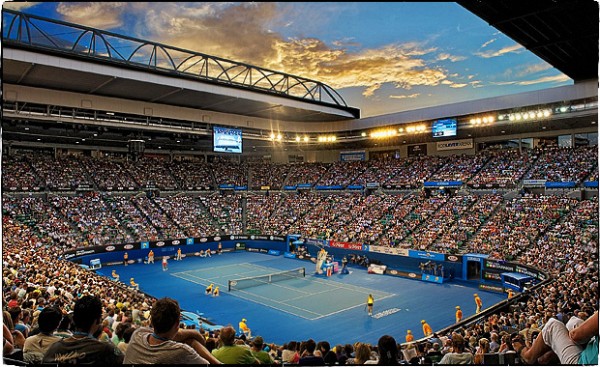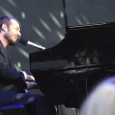Gripping finals matches, success for our Australian players and outstanding attendance figures highlighted the 2013 Australian Open at Melbourne Park.
Considered as the first of the four ‘Grand Slam’ tennis events of the year, the Australian Open is conducted on the picturesque courts of Melbourne Park. Exceptional weather greeted both players and fans at the Open, culminating in a near attendance record of 684,457 fans, just shy of the attendance record set at the 2012 tournament.
Many of the fans at the Open are interstate or international visitors who help to boost the Victorian economy. These visitors fill up the many Melbourne hotels, frequent many of our well-known restaurants and are always seen carrying Australian Open souvenirs and merchandise.
Upon visiting one of my favourite restaurants in St Kilda Road, I was told that the restaurant was booked out later that evening, with a few large tables taken up by visiting tennis fans from Adelaide. The positive impact on the Victorian economy is clear, with the tournament approximately generating an extra $240 million for the economy over the duration of the tournament.
I was lucky enough to attend the quarter final match between a legend of the sport, Roger Federer and Jo-Wilfred Tsonga of France. The atmosphere was electric and every point was cheered by a packed stadium that eventually saw Federer overcome Tsonga in a pulsating five-set classic (7-6, 4-6, 7-6, 3-6, 6-3).
However, it was a shame that the organisers scheduled the women’s doubles match involving Australians Ashleigh Barty and Casey Dellacqua to commence after the completion of the men’s match, which concluded at 11:30pm.
 After Federer’s victory, thousands of fans exited the stadium and only a few hundred stayed to watch the two Australians win their semi-final match in straight sets (6-2, 6-4). Regardless of their gender, any Australians playing near the end of the tournament should be given a prime match time that maximises the number of fans at the match and their exposure to the Australian public.
After Federer’s victory, thousands of fans exited the stadium and only a few hundred stayed to watch the two Australians win their semi-final match in straight sets (6-2, 6-4). Regardless of their gender, any Australians playing near the end of the tournament should be given a prime match time that maximises the number of fans at the match and their exposure to the Australian public.
It does seem that tennis fans prefer to watch the men in action at the Australian Open rather than the women.
The men’s final between Andy Murray and Novak Djokovic was watched by 642,000 more Australian fans than the women’s final between Li Na and Victoria Azarenka, according to television ratings provided by TV Tonight.
This large discrepancy and apparent preference for the male form of the game may be due to the fact that a women’s grand slam game will only last for a maximum of three sets, compared to the traditional five sets for men.
The lack of inequality is evident; it seems that tennis organisers believe men have superior fitness levels to their female counterparts and greater ability to fight out a five-set match.
Or maybe it is due to the actions of some female players, such as Russian star Maria Sharapova, whose grunting and screaming after every shot distracts fans and leads to many turning off their television sets mid-game, complaining of a dull headache.
Whatever the problem, it is clear that men’s tennis attracts more attention than women’s tennis these days, so it is up to tennis officials to address this discrepancy.
The doubles pairing of Dellacqua and Barty was one of the many Australian success stories during the tournament. The girls finished runners-up in the women’s doubles competition, fighting valiantly but eventually losing the final in three sets to the Italian pair of Errani and Vinci.
Further success came for Australia in the Junior Boys event, with world number 1 Nick Kyrgios claiming the Junior Boys’ title over compatriot and wildcard entry Thanasi Kokkinakis. The win was Kyrgios’ first major title and hopefully the first of many more to come for the Australian junior.





